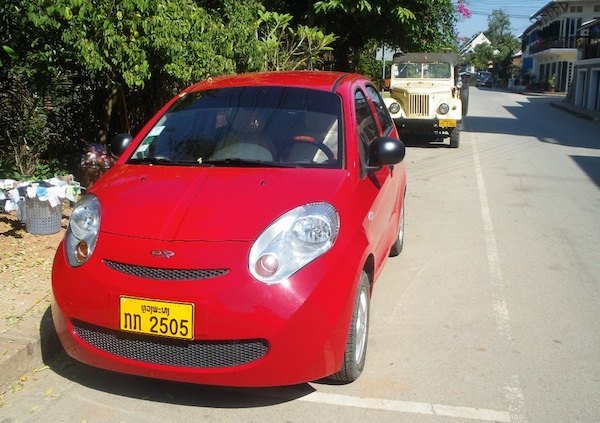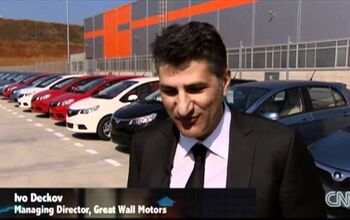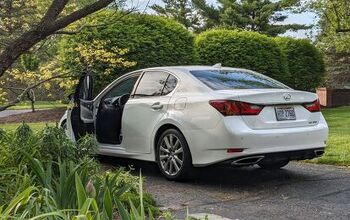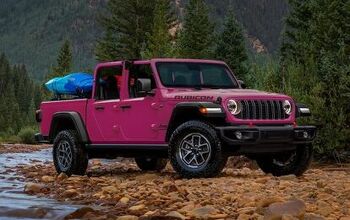Best Selling Cars Around The Globe: How The Chinese Are Setting Themselves For Success (Part 4: Asia)
This is Part 4 of a 5 Part-series about how the Chinese car manufacturers are faring abroad.
You can check out Part 1 about Africa here, Part 2 about Latin America here and Part 3 about Eastern Europe here.
In the first 3 parts of this series we have observed that Chinese carmakers have managed their expansion into Africa, Latin America and Eastern Europe by securing less developed markets and using them as anchor points for a more widespread presence in these regions. In this context it’s interesting to note that in their own ‘backyard’, Asia, the same strategy has not been met with the same success, with only a handful of small markets in the region ‘cracked’ so far..
In Myanmar, as the market becomes normalized, all 1,000 Chery QQ imported by the Ministry of Industry sold out within a week last December in spite of seeing their original price more than double once various duties, taxes and licensing fees were added. The QQ is now a common sight in the main city in the country, Yangoon, mainly as taxis.
Laos is the only other South-East Asian market where the Chinese seem to be enjoying very healthy sales, with the Chery M1, QQ & Tiggo, JAC Tongyue and BYD F0 all noticed in the streets of Luang Prabang my dear Mum and Dad during their last trip there in January 2011.
Neighbor North Korea is potentially the market in the world where the Chinese dominate the most, thanks to government links between the two countries. I estimate this based on the observation of rare videos of the streets of the capital Pyongyang. Local manufacturer Pyeonghwa assembles under license the Samchunri (aka Jinbei Haise) which should be the best-seller in the country, Brilliance BS4, FSV and Huanghai Shuguan, romantically renamed Ppoggugi 4WD.
A little more to the West in Sri Lanka, Geely has associated with local brand Micro Cars to assemble and sell the Panda and MK (renamed MX7) to relative success. Micro Cars also assembles and sells Great Wall and Jinbei vehicles and ranked #2 in the country last February. In India, Chevrolet just launched the Enjoy which is in fact a rebadged Wuling Hongguang ( #42 in April for its first month) and Chery assembles and sells the QQ in Pakistan, however no sales figures are available so far.
Another part of the world completely bypassed by most car manufacturers except the Chinese is all the Central Asian former Soviet nations. Even though official data is still rare for these countries, anecdotal evidence show they are present there en masse. For example, did you know that judging by YouTube videos the Changhe Freedom must have been the best-selling car in Tajikistan for a couple of years before such minivans were abruptly banned over safety concerns in 2010? Lifan has been assembling cars in Azerbaijan since 2010 and the MG3 can already be noticed in the streets of the capital Baku. Finally Geely will export part of its Belarus production to Kazakhstan from 2014 onwards…
All other significant markets in the region have resisted the Chinese assault so far. Chery apparently assembles cars in Indonesia, Malaysia, Taiwan, Thailand and Vietnam but their only claim to fame to-date has been the 27th place of the Chery Eastar in Malaysia in 2010. Geely assembles in Indonesia but the only models I saw in two weeks in Bali were a few MK2 taxis and one single Panda.
Hafei launched the Brio as the Naza Sutera in Malaysia in 2006, then renamed it Forza in 2007 without luck while Chana’s attempt at launching the Era CV6 and CM8 there in 2009 also failed. Lifan assembles in Vietnam since 2007 and I did see one 520 sedan in Sapa when I travelled there but it seems DongFeng is having much more luck in the heavy truck sector there. The situation is similar in Iran where Chery and Lifan have been assembling cars since 2006, and even though the Fulwin 2 hit a record #4 last month, the production volumes remain very small.
However this situation may change rather quickly, judging at how dynamic the entire Chinese delegation was at the Manila Auto Show in the Philippines earlier this year, as I detailed in my article Manila Auto Show 2013: Has the time come for Chinese manufacturers? According to Leon Herrera, CEO of Chery Motors Philippines, Chery is “aiming at a spot in the Top 5 at the end of 2013 year and between 10 and 15% of the market” by 2015 which is exceptionally ambitious given this is Chery’s second attempt at cracking the Filipino market after the first one failed.
Paradoxically, their proximity with other parts of Asia seems to have worked against Chinese car manufacturers so far, giving a surprisingly less positive balance sheet in a region where defiance towards Chinese domination may have hindered their progress. Potentially not for too much longer. Where there’s a will, there’s a way?
Stay tuned for the final Part of this series about Mature markets!
More by Matt Gasnier
Latest Car Reviews
Read moreLatest Product Reviews
Read moreRecent Comments
- FreedMike If Dodge were smart - and I don't think they are - they'd spend their money refreshing and reworking the Durango (which I think is entering model year 3,221), versus going down the same "stuff 'em full of motor and give 'em cool new paint options" path. That's the approach they used with the Charger and Challenger, and both those models are dead. The Durango is still a strong product in a strong market; why not keep it fresher?
- Bill Wade I was driving a new Subaru a few weeks ago on I-10 near Tucson and it suddenly decided to slam on the brakes from a tumbleweed blowing across the highway. I just about had a heart attack while it nearly threw my mom through the windshield and dumped our grocery bags all over the place. It seems like a bad idea to me, the tech isn't ready.
- FreedMike I don't get the business case for these plug-in hybrid Jeep off roaders. They're a LOT more expensive (almost fourteen grand for the four-door Wrangler) and still get lousy MPG. They're certainly quick, but the last thing the Wrangler - one of the most obtuse-handling vehicles you can buy - needs is MOOOAAAARRRR POWER. In my neck of the woods, where off-road vehicles are big, the only 4Xe models I see of the wrangler wear fleet (rental) plates. What's the point? Wrangler sales have taken a massive plunge the last few years - why doesn't Jeep focus on affordability and value versus tech that only a very small part of its' buyer base would appreciate?
- Bill Wade I think about my dealer who was clueless about uConnect updates and still can't fix station presets disappearing and the manufacturers want me to trust them and their dealers to address any self driving concerns when they can't fix a simple radio?Right.
- FreedMike I don't think they work very well, so yeah...I'm afraid of them. And as many have pointed out, human drivers tend to be so bad that they are also worthy of being feared; that's true, but if that's the case, why add one more layer of bad drivers into the mix?









































Comments
Join the conversation
I wrote an article looking at China's success in Cambodia and Laos. In both cases the Japanese and Koreans are doing much better. http://www.markeaandrews.com/blog/car-blog/not-even-third-place-in-the-third-world